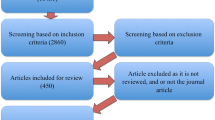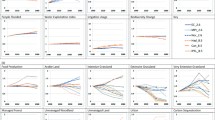Abstract
Forty-nine countries participating in the U.S. Country Studies Program (USCSP) assessed climate change impacts in one or more of eight sectors: coastal resources, agriculture, grasslands/livestock, water resources, forests, fisheries, wildlife, and health. The studies were generally limited to analysis of first order biophysical effects, e.g., coastal inundation, crop yield, and runoff changes. There were some limited studies of adaptation. We review and synthesize the results of the impact assessments conducted under the USCSP. The studies found that sea level rise could cause substantial inundation and erosion of valuable lands, but, protecting developed areas would be economically sound. The studies showed mixed results for changes in crop yields, with a tendency toward decreased yields in African and Asian countries, particularly southern Asian countries, and mixed results in European and Latin American countries. Adaptation could significantly affect yields, but it is not clear whether the adaptations are affordable or feasible. The studies tend to show a high sensitivity of runoff to climate change, which could result in increases in droughts or floods. The impacts on grasslands and livestock are mixed, but there appears to be a large capacity for adaptation. Human health problems could increase, particularly for populations in low-latitude countries with inadequate access to health care. The USCSP assessments found that the composition of forests is likely to change, while biomass could be reduced. Some wildlife species were estimated to have reduced populations. The major contribution of the USCSP was in building capacity in developing countries to assess potential climate impacts. However, many of the studies did not analyze the implications of biophysical impacts of climate change on socioeconomic conditions, cross-sectoral integration of impacts, autonomous adaptation, or proactive adaptation. Follow-on work should attempt to develop capacity in developing and transition countries to conduct more integrated studies of climate change impacts.
Similar content being viewed by others
References
Allen-Diaz, B.: 1996,‘Rangelands in a Changing Climate: Impacts, Adaptations, and Mitigation’, in Watson, R. T., Zinyowera, M. C., and Moss, R. H. (eds.), Climate Change 1995: The IPCC Second Assessment Report, Volume 2: Scientific-Technical Analyses of Impacts, Adaptations, and Mitigation of Climate Change,Cambridge University Press, Cambridge, U.K.
Baker, B. B., Hanson, J. D., Bourdon, R. M., and Eckert, J. B.: 1993, ‘The Potential Effects of Climate Change on Ecosystem Processes and Cattle Production on U.S. Rangelands’, Clim. Change 25, 97–117.
Benioff, R., Guill, S., and Lee, J. (eds.): 1996,Vulnerability and Adaptation Assessments: An International Guidebook,Kluwer Academic Publishers, Dordrecht.
Boer, G. J., McFarlane, N. A., and Lazare, M.: 1992, ‘Greenhouse Gas-Induced Climate Change Simulated with the CCC Second-Generation General Circulation Model’, Bull. Amer. Meteorol. Soc. 5,1045–1077.
Bos, E., Vu, M. T., Massiah, E., and Bulatao, R. A.: 1994,World Population Projections 1994–95 Edition, published for the World Bank, Johns Hopkins University Press, Baltimore.
Burnash, R. J., Ferral, R. L., and McGuire, R. A.: 1973,A Generalized Streamflow Simulation System, Conceptual Modeling for Digital Computers,U.S. National Weather Service and California Department of Water Resources, Sacramento, CA.
Carter, T. R., Parry, M. L., Harasawa, H., and Nishioka, S.: 1994,IPCC Technical Guidelines for Assessing Climate Change Impacts and Adaptations,Department of Geography, University College, London, U.K.
CIA: 1999,The World Factbook,U.S. Central Intelligence Agency, Washington, D.C. (http://www.odci.gov/cia/publications/factbook/country.html).
Dixon, R. K.: 1997, ‘Foreword’,Clim. Change 36,1–2.
Feenstra, J., Burton, I., Smith, J. B., and Tol R. (eds.): 1998,Handbook on Methods for Climate Change Impact Assessment and Adaptation Strategies,Institute for Environmental Studies, Free University, Amsterdam.
Hansen, J., Russell, G., Rind, D., Stone, P., Lacis, A., Lebedeff, S., Ruedy, R., and Travis, L.: 1983, ‘Efficient Three-Dimensional Global Models for Climate Studies: Models I and II’,Mon. Wea. Rev. 111,609–622.
Hanson, J. D., Baker, B. B., and Bourdon, R. M.: 1992,SPUR2 Documentation and User' Guide, U.S. Department of Agriculture, ARS, Great Plains Systems Research Technical Report-1, Fort Collins, CO, p.24.
Hanson, J. D., Baker, B. B., and Bourdon, R. M.: 1993, ‘Comparison of the Effects of Different Climate Change Scenarios on Rangeland Livestock Production’,Agric. Sys. 41,487–502.
Holdridge, L. R.: 1967, Life Zone Ecology, Tropical Science Center, San Jose, CA.
Houghton, J. T., Jenkins, G. J., and Ephraums, J. J. (eds.): 1990,Climate Change: The IPCC Scientific Assessment,Cambridge University Press, New York.
Houghton, J. T., Meira Filho, L. G., Callander, B. A., Harris, N., Kattenberg, A., and Maskell, K. (eds.): 1996,Climate Change 1995: The Science of Climate Change, Contribution of Working Group I to the Second Assessment Report of the Intergovernmental Panel on Climate Change, Cambridge University Press, Cambridge, U.K.
IPCC:2001,Climate Change 2001: The Scientific Basis,Cambridge University Press, New York.
IPCC CZMS: 1992, ‘A Common Methodology for Assessing Vulnerability to Sea Level Rise’, in Global Climate Change and the Rising Challenge of the Sea,Report of the Coastal Zone Management Subgroup of the Intergovernmental Panel on Climate Change, Ministry of Transport, Public Works and Water Management, The Hague, Appendix C.
Kaczmarek, Z.: 1993, ‘Water Balance Model for Climate Impact Analysis’,Acta Geophys. Polon. 41,1–16.
Kalkstein, L. S. and Greene, J. S.: 1997, ‘An Evaluation of Climate/Mortality Relationships in Large U.S. Cities and the Possible Impacts of a Climate Change’,Environ. Hlth Persp. 105,2–11.
Leatherman, S. P., Nicholls, R. J., and Dennis, K. C.: 1995, ‘Aerial Videotape-Assisted Vulnerability Analysis: A Cost-Effective Approach to Assess Sea-Level Rise Impacts’, J. Coast. Res. 14, 15–25 (special issue).
Leggett, J., Pepper, W. J., and Swart, R. J.: 1992, ‘Emissions Scenarios for IPCC: An Update’, in Houghton, J. T., Callander, B. A., and Varney, S. K. (eds.),Climate Change 1992, – The Supplementary Report to the IPCC Scientific Assessment,WMO/UNEP Intergovernmental Panel on Climate Change, Cambridge University Press, Cambridge, U.K.
Manabe, S., Stouffer, R. J., Spelman, M. J., and Bryan, K.: 1991, ‘Transient Responses of a Coupled Ocean-Atmosphere Model to Gradual Changes of Atmospheric CO2. Part 1: Annual Mean Response’,J. Climate 4,785–818.
Markham, A. and Malcolm, J.: 1996, ‘Biodiversity and Wildlife Conservation: Adaptation to Climate Change’, in Smith, J., Bhatti, N., Menzhulin, G., Benioff, R., Campos, M., Jallow, B., and Rijsberman, F. (eds.), Adaptation to Climate Change: Assessment and Issues,Springer-Verlag, New York.
Martens, W. J. M., Rotmans, J., and Niessen, L. W.: 1994,Climate Change and Malaria Risk – An Integrated Modeling Approach, Rijksinstituut voor Volksgezondheid en Milieuhygiene (RIVM) Report No. 461502003, Bilthoven, The Netherlands, March.
Mitchell, J. F. B., Manabe, S., Tokioka, T., and Meleshko, V.: 1990, ‘Equilibrium Change’, in Houghton, J. T., Jenkins, G. J., and Ephraums, J. J. (eds.), Climate Change: The IPCC Scientific Assessment,Cambridge University Press, New York.
Neilson, R. P., Smith, B., Kittel, T., and Viner, D.: 1998, ‘Simulated Changes in Vegetation Distribution under Global Warming, Appendix C’, in Watson, R. T., Zinyowera, M. C., and Moss, R. H. (eds.), The Regional Impacts of Climate Change: An Assessment of Vulnerability,Cambridge University Press, Cambridge, U.K.
Rind, D., Goldberg, R., Hansen, J., Rosenzweig, C., and Ruedy, R.: 1990, ‘Potential Evapotranspiration and the Likelihood of Future Drought’,J. Geophys. Res. 95,9,983–10,004.
Rosenzweig, C. and Iglesias, A. (eds.): 1994,Implications of Climate Change for International Agriculture: Crop Modeling Study, EPA 230-B-94-003, U.S. Environmental Protection Agency, Washington, D.C.
Rosenzweig, C. and Parry, M. L.: 1994, ‘Potential Impact of Climate Change onWorld Food Supply’, Nature 367,133–138.
Schlesinger, M. E. and Zhao, Z.-C.: 1989, ‘Seasonal Climatic Changes Induced by Double CO2 as Simulated by the OSU Atmospheric GCM/Mixed-Layer Ocean Model’,J. Climate 2,459–495.
Shugart, H. H. and West, D. C.: 1980, ‘Forest Succession Models’,Bioscience 30,208–313.
Smith, J. B. and Hulme, M.: 1998, ‘Climate Change Scenarios’, in Feenstra, J., Burton, I., Smith, J. B., and Tol, R. (eds.), Handbook on Methods for Climate Change Impact Assessment and Adaptation Strategies, Institute for Environmental Studies, Free University, Amsterdam.
Smith, J. B., Huq, S., Lenhart, S., Mata, L. J., Nemesova, I., and Toure, S.: 1996a, Vulnerability and Adaptation to Climate Change: Interim Results from the U.S. Country Studies Program,Kluwer Academic Publishers, Boston.
Smith, J. B., Bhatti, N., Menzhulin, G., Benioff, R., Cumpos, M., Jallow, B., and Rijsberman, F.: 1996b, Adaptation to Climate Change: Assessments and Issues,Springer-Verlag, New York.
Timmerman, A., Oberhuber, J., Bacher, A., Esch, M., Latif, M., and Roeckner, E.: 1999, ‘Increased El Niño Frequency in a Climate Model Forced by Future Greenhouse Warming’,Nature 398, 694–697.
USCSP: 1999, Climate Change: Mitigation, Vulnerability, and Adaptation in Developing Countries, U.S. Country Studies Program, Washington, D.C.
U.S. Fish and Wildlife Service: 1981,Standards for the Development of Habitat Suitability Index Models, 103 ESM, U.S. Fish and Wildlife Service, Division of Ecological Services, Washington, D.C.
Watson, R. T., Zinyowera, M. C., and Moss, R. H. (eds.): 1996,Climate Change 1995: The IPCC Second Assessment Report, Volume 2: Scientific-Technical Analyses of Impacts, Adaptations, and Mitigation of Climate Change,Cambridge University Press, Cambridge, U.K.
Wetherald, R. T. and Manabe, S.: 1988, ‘Cloud Feedback Processes in a General Circulation Model’, J. Atmos. Sci. 45,1397–1415.
Wilson, C. A. and Mitchell, J. F. B.: 1987, ‘A Doubled CO2 Climate Sensitivity Experiment with a Global Climate Model Including a Simple Ocean’, J. Geophys. Res. 92, 13,315–13,343.
Wolock, D. M. and McCabe, G. J.: 1999, ‘Estimates of Runoff Using Water-Balance and Atmospheric General Circulation Models’,J. Amer. Water Resour. Assoc. 35, 1341–1350.
Yates, D.: 1996, ‘WATBAL: An Integrated Water Balance Model for Climate Impact Assessment of River Basin Runoff’,Water Resour. Develop. 12,121–139.
Yates, D. N. and Strzepek, K. M.: 1998, ‘An Assessment of Integrated Climate Change Impacts on the Agricultural Economy of Egypt’,Clim. Change 38,261–287.
Author information
Authors and Affiliations
Rights and permissions
About this article
Cite this article
Smith, J.B., Lazo, J.K. A Summary of Climate Change Impact Assessments from the U.S. Country Studies Program. Climatic Change 50, 1–29 (2001). https://doi.org/10.1023/A:1010642529072
Issue Date:
DOI: https://doi.org/10.1023/A:1010642529072




